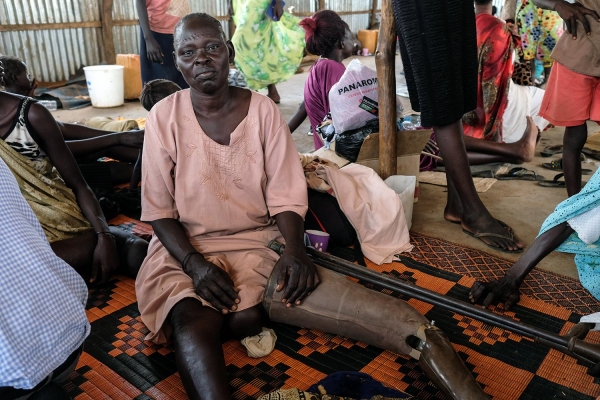Thanks to the adoption of the Convention on the Rights of Persons with Disabilities (CRPD) in 2008, a new human rights-based approach has been implemented. Consequently, it has been made possible to shift the paradigm on disability from regarding persons with disabilities as objects of medical care and charity to recognizing them as subjects of rights. However, does this new approach effectively influence reality? How can the hurdles be overcome?
The last episode of the Disability and Armed conflict series will outline the key findings in combination with the major recommendations regarding how to overcome the challenges related to the conditions under which persons with disabilities live in conflict zones.
As constantly underlined in the series’ episodes, armed conflicts have a disproportionate impact on people with disabilities, in each phase of the conflict. Such impact remains largely underreported, further making people with disabilities so-called “invisible victims”, meaning the first ones to be forgotten. As previously seen, one in seven people has a disability, but most likely even more during conflict. The impact on these people is believed to be disproportionate because the International Humanitarian Law (IHL) provisions which aim to minimize such impact are not being applied in a diversity inclusive manner.
In this regard, the recognition and the empowerment of this vulnerable category would allow these people to act as agents of change, giving them equal access to humanitarian policy design, implementation and monitoring. International and humanitarian organisations have a stronger responsibility to ensure that their services are fully accessible to all persons, especially those with disabilities. In addition, militaries should also receive training on disability rights and diversity.
Furthermore, due to the lack of reliable and comprehensive quantitative and qualitative data, it is not possible to estimate and understand the intersectional and multidimensional discrimination that people with disabilities face. As underlined by the Geneva Academy, only once comprehensive data sets are available can advocacy, resources, policy and practice be developed to respond to their lived experience and overcome the obstacles to reach a proper IHL protection. In this spirit, States are not the only actors to be accountable for data collection. All humanitarian organizations need to calibrate their services and practices in conflict areas according to the data they should be collecting to also test the accessibility of their services. To do so, humanitarian personnel should be given training on disability inclusive data collection.
In addition, as stated in article 11 of the CRPD, the Committee on the Rights of Persons with Disabilities is required to understand whether the State in question is taking all the “necessary measures” in accordance with its obligations under IHL and CRPD to ensure full protection and safety of persons with disabilities. However, although the Committee is the main interpreter of both bodies of law, no jurisprudence concerning the implementation of the two instruments has been developed yet. In accordance with article 34 of the CRPD, it is thus required that the Committee ensures it enhances its IHL capacity by also recruiting members that are experts with competence and experience in disability and IHL.
As urged by Rau Barriga, Disability rights director at Human Rights Watch, UN member states and the Secretary-General are strongly encouraged to commit to protecting people with disabilities in armed conflict, by taking a more inclusive and participatory approach towards this category. In this spirit, the Security Council should instruct peacekeeping missions and relevant UN bodies to consult and involve people with disabilities in emergency and humanitarian response.
In conclusion, the key to move beyond words and ensure the effective protection of people with disabilities is to develop inclusive plans providing structural access to basic services like shelter, sanitation, mental health support, and education. Additional resources are strongly needed to ensure the adequate evacuation of civilians with disabilities from areas of hostilities.
To know more, please read:
https://www.geneva-academy.ch/joomlatools-files/docman-files/Academy%20Briefing%2014-interactif.pdf
https://www.hrw.org/news/2019/05/28/un-focus-civilians-disabilities-wartime







